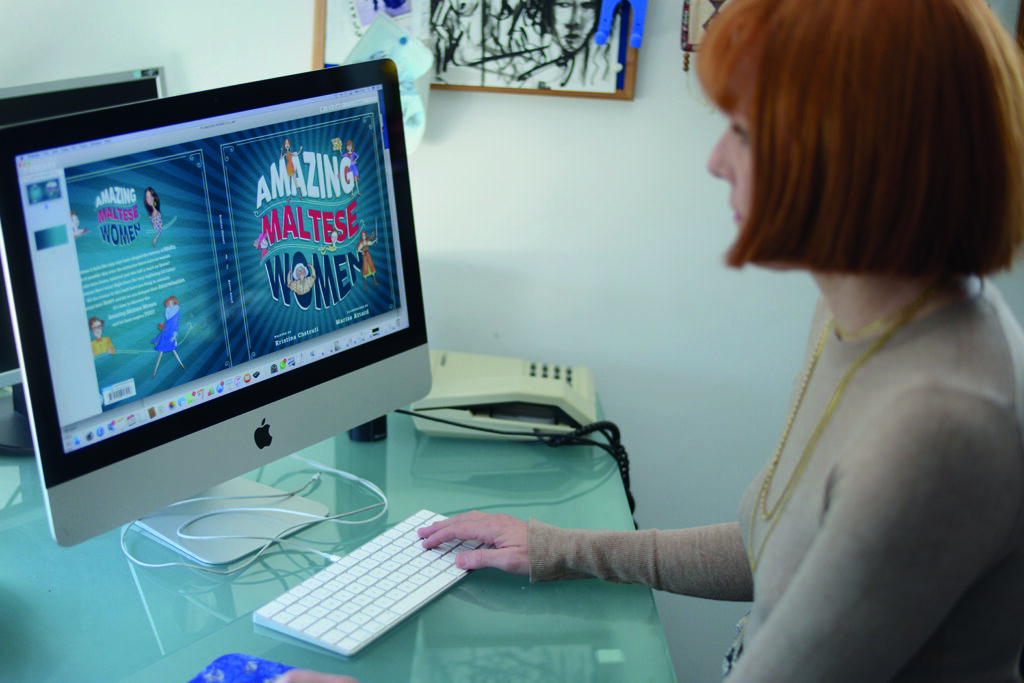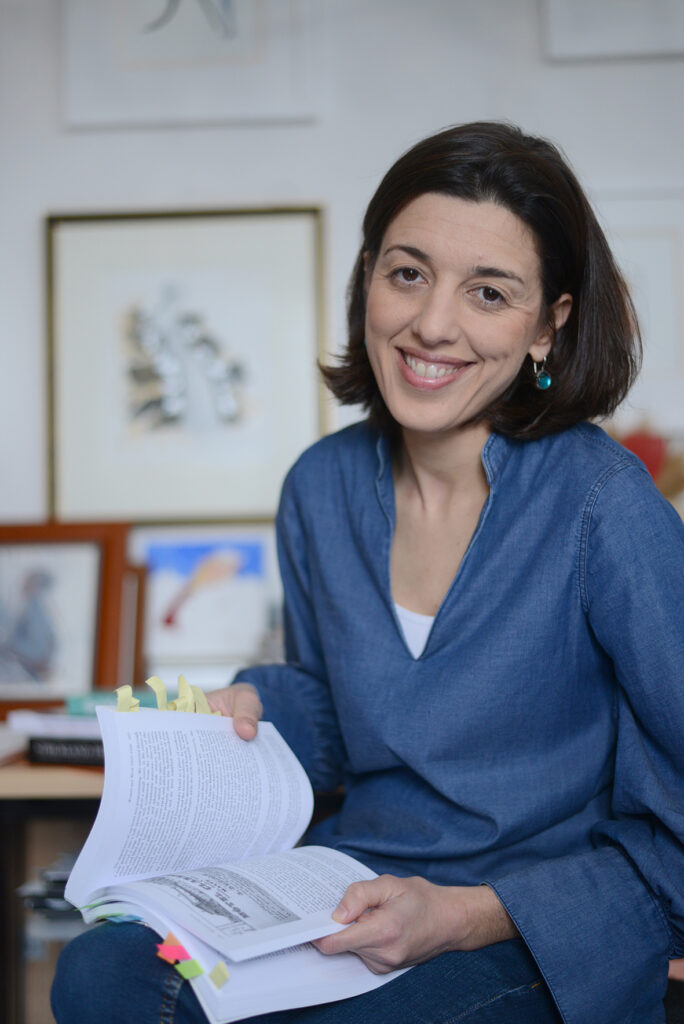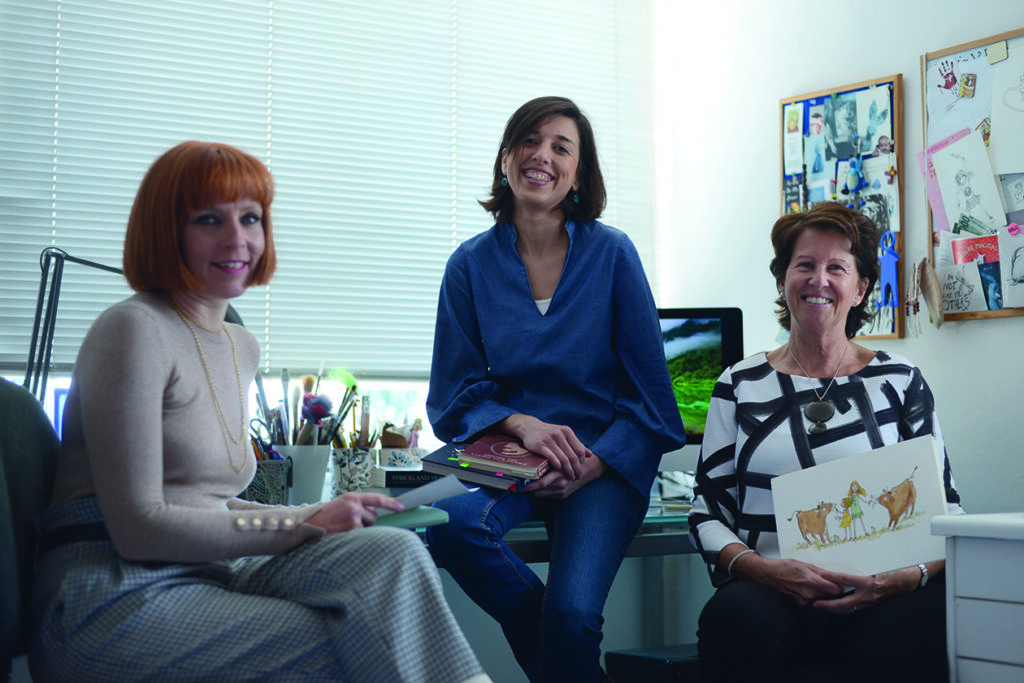Has our society been shaped only by men? What about Maltese women? These are some of the questions that inspired Kristina Chetcuti to write a children’s book on the brave, talented females who have left – and are leaving – their mark on Malta. The all-female team, including illustrator Marisa Attard and designer Faye Paris, has created a book that can help start to redress the imbalance of a power structure made up of men in suits.
Three years ago, the world woke up to the sudden realisation that, hey, there are some great women on planet Earth. And all of a sudden, bookshops were inundated with children’s books about great women who made history in science, in the arts, in medicine, in activism, everywhere.
Obviously, being a sucker for feminism and for books meant my daughter’s shelves were, by the end of 2018, heaving under the weight of women power. Rebel Girls, Fantastically Great Women, Big Dreams – you name it, she’s read it.
“Remember, you can be whatever you want to be,” I told her with each new book. “I know, Ma,” she’d say duh-like, rolling her eyes. At age 11, armed with all these stories, she couldn’t grasp how there could be such a thing as a glass ceiling.

The thing is, the more I pored over these books, the more I felt something was amiss. What about Maltese women? Is it possible that over the centuries, there were no brave, talented women who left a mark on Malta? Has our society been shaped only by men?
“Where are our women?” I bemoaned to my colleagues at Merlin Publishers. We made a tentative list of those we felt had made a difference to our lives and we counted them on one hand, with two fingers to spare.
And that’s how it started. It was decided I’d do some research, and if I could dig up enough stories, Merlin Publishers would turn it into a children’s book.
The first hurdle was the lack of documentation. The very little literature I came across on Maltese women was mostly academic – not exactly riveting stuff for children. So, I started asking around: historians, art historians, seasoned politicians, doctors, journalists – I once even asked readers for help in one of my columns in The Sunday Times of Malta. Had they chanced upon any inspiring women?
Gradually, the numbers started multiplying. In the end, I had to shortlist the 17 most resilient women who were, or are, not afraid to go against the current for the benefit of the common good.
Then came the fun part: writing the stories.

I did not stick to a particular period. The book, in fact, cuts across the ages: from Tina, the prehistoric Maltese woman, who lived in an impressively egalitarian society in Ġgantija, Gozo, about 5,000 years ago; to Amy Camilleri Zahra, one of the most influential activists for disability rights, who lives in B’Kara.
I wanted to show children that some of these women, who had followed their heart and had let no one dampen their determination, did not only exist in the past, but they can meet them or bump into them even today, like Esther Azzopardi, who’s a UEFA football referee.
Of course, the book truly came to life when Marisa Attard came on board as the illustrator. Her ink and watercolour illustrations made it possible to narrate the story in a comic-like fashion, so it reads almost like a conversation.
And Marisa’s wit comes across so deftly in her drawings – children will pick up all her little nuances and clues [check out the hilarious rag doll in Henrietta Chevalier’s story].
Marisa and I then worked with designer Faye Paris, whose layout brought the book together. It was a veritable all-girl team!
Each woman featured in Amazing Maltese Women has her own special thing about her. But the most exciting find was certainly Clara La Spatara. Who would have thought that in the time of the Knights, there was a much sought-after female blacksmith, who forged some of the most feared swords?
One important thing to highlight is that these stories are not hagiographies. These are women just like you and I, with a lot of imperfections – and we feature them as they are. For example, we do not try to hide the first female President,Agatha Barbara’s penchant for swearing in public, but then we show her contribution to the education system.
Indeed, the most emotional part of the book was writing about investigative journalist Daphne Caruana Galizia. She was the first one on my list, but the last story I wrote. How far could I go in explaining her brutal, state-sponsored assassination, seeing as this was a book for children? In the end, I decided to be very open about what happened. Children do not live in Disneyland. It is important for them to know what is happening around them in a language they can understand. The better we prepare them for the real world, the better citizens and leaders our society will have in future.

I hope that children – be they boys or girls – will be inspired by these real-life stories. In fact, I’d like to stress that this is not just a book for girls. Please, please, read it as a family. We are a society equally made up of men and women, and books like these can help start to redress the imbalance we have of a power structure made up of men in suits.
Amazing Maltese Women is the first step towards writing women back into our history. And may I add that it’s got the thumbs up from the daughter. Not even a single eyeroll, duh.
An illustrator’s perspective
Illustrating a very visual book is work-intensive, says Marisa Attard, but it was a challenge she took on willingly once she got to know that this publication would be celebrating Maltese women and their achievements.
“It is important to show our children that we are capable of leaving our mark both locally and internationally. Also, I always enjoy working with Merlin Publishers – they’re a great team and give me a lot of creative space,” the illustrator adds.
While the bulk of the research for the book was done by Kristina Chetcuti, Marisa complemented that by looking at children’s books with similar themes and by searching online, or in books, for photo references and anecdotes that would help her build the characters and get a sense of the era in which each woman lived.
“Since we featured some women from the present, I also met some of them or their families,” she recounts.
“I loved discovering each woman, some household names, others relatively unknown. Then I used my imagination and artistic licence to bring them to life. Once I started illustrating, my own style came through.”

Marisa says it was also great seeing the project come to life gradually. “There was a lot of collaboration between Kristina, Faye and myself. Choosing what to illustrate, which parts of the text to highlight, the colour palette, the layout and composition, chopping and changing, was essential, and we worked well together. I thoroughly enjoyed every step of the way.
“We also had to keep in mind that this was a book for children, but we did not compromise on the truth of what their lives were like and, in fact, the most difficult for us was Daphne Caruana Galizia’s story,” she admits.
Real life does not always have a happy ending, but there is a story of hope, courage and determination in all these women’s lives, Marisa points out.
Although she finds all these amazing Maltese women inspirational, her two personal favourites are Maria de Dominici, a woman artist at a time when they were a very rare breed, and Daphne, whose story has touched and influenced her life immensely.
Amazing Maltese Women can be pre-ordered online at a special price from merlinpublishers.com. It will be available for sale from all leading bookshops in the first week of March.










